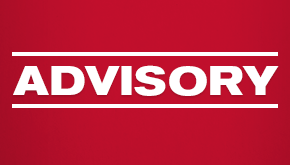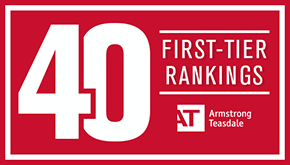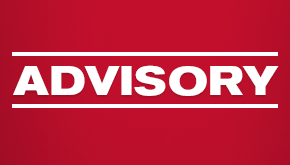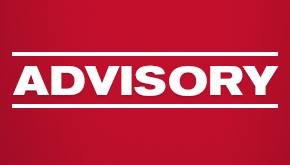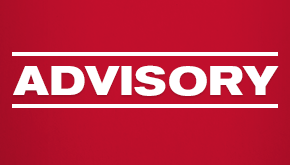Policing Counterfeit Goods In 2019 Was Redefined By Tech
Brand owners already know that fighting counterfeits is a constant battle covering a wide range of industries around the world. The sale of counterfeit items not only harms companies investing in intellectual property, but also end consumers and entire economies. Trading in fake goods undermines quality, takes money from research, avoids taxes and tariffs, circumvents employment laws, supports organized crime and presents health and safety risks.
Fake prescription and over-the-counter drugs may have no active ingredients; poorly made electrical goods are fire hazards; fake medical devices result in health failures and infections; and sub-standard chemicals in personal care and infant care products can affect health and wellness. Despite all the news reports, consumers still don’t appreciate the potential dangers that greet them each day as they surf the internet for bargains and act on social media ads.
The Organization for Economic Cooperation and Development noted in its March report that counterfeit goods made up 3.3% of world trade, and that number is continuing to rise. Likewise, in fiscal year 2018, U.S. Customs and Border Patrol reported[1] that its Integrated Trade Targeting Network conducted over 120 operations targeting high-risk shipments across the U.S. that resulted in seizures of intellectual property rights-infringing goods with an estimated manufacturer-suggested retail price of over $94 million.
This represented a 104% increase in MSRP estimated seizure from similar IP rights trade special operations from the previous fiscal year. Overall seizure MSRP, had the products been genuine, increased to nearly $1.4 billion in 2018 from $1.2 billion seized in 2017.
The amount of these products being purchased via e-commerce is stunning. This includes third-party platforms where consumers order and have product shipped directly to their homes and places of work. In fiscal year 2018, CBP reported there were 161 million express shipments, and 475 million packages shipped through international mail. Small parcels accounted for 69% of total customs counterfeit seizures by volume between 2014 and 2016. Small parcel stops are defined as having monetary value of less than $800 each.
Last year, 90% of U.S. counterfeit seizures were imported goods through mail in small parcels. The source of these counterfeit products is still primarily China (54%) and Hong Kong (31%). Now, instead of streaming across the ocean and offloading at large ports to end up in stores and flea markets, they are being delivered directly to consumers’ homes.
E-Commerce continues to grow.
The anti-counterfeiting fight still includes brick and mortar enforcement, but in the last decade, e-commerce platforms have dominated as the top marketplace for counterfeits goods. When looking at the full scope of counterfeiting, we include not only fake goods, but unauthorized copies of copyrighted content as well. Piracy of copyrighted intellectual property includes not just entertainment content, but all types of software and even subscription service plans.
Copyright piracy —it’s not just about downloads.
Piracy of copyrighted works has evolved to include not only file-sharing and unauthorized downloads, but also mirrors of mainstream subscription services that stream unauthorized content at will. We know that the content (music, television, movies, games) is not the only product stolen — consumers’ personal data associated with online orders online is also under attack.
The Jetflicks content-streaming service case got a lot of attention. Jetflicks was in operation for over a decade selling subscriptions to pirated content and was just recently shut down. It allegedly hosted more than 183,000 television episodes and had more than 37,000 subscribers at the low subscription rate of $9.99 a month. Third-party software scoured the internet for content, and Jetflicks provided the platform and apps to allow users to view it.
The eight Jetflicks defendants were charged with conspiracy to commit criminal copyright infringement, and two of them were also charged with money laundering. iStreamItAll, which has two of the same managers as Jetflicks, was still running despite the lawsuit. New software, platforms, apps and chat rooms will continue to pop up as infringers look for new ways to illegally provide the latest music, TV and movies to consumers illegally.
Brand owners of counterfeited products are taking a much closer look at using their copyrights to add another layer of enforcement to their tool box. Product and packaging designs, packaging layouts, instruction manuals and the like are copyrighted works upon which brand owners can send DMCA take downs and add the option of copyright statutory damages claims in addition to trademark counterfeiting claims.
The health care industry is a big target.
Consumers looking for affordable prescription and nonprescription drugs have fallen for the allure of government-regulated pricing in Canada. However, ordering from the plethora of websites that tout their products as Canadian is one more treasure trove of counterfeit sites. Smarter consumers may look at the website for the Canadian International Pharmacy Association,[2] which lists only 71 providers authorized as legitimate.
More likely, an internet search for your prescription will bring up a long list of sites, many with names that sound like the pharmacies are in Canada, but are actually fronts for counterfeiters in Eastern Europe. Fake pharmacy websites are set up in European countries, such as the Netherlands, where internet privacy policies make it almost impossible for brand owners to determine the source of the websites or domain name owners. Payment may be processed in Eastern Europe; the order routed to Asia for purchaser verification; and then shipped to you from anywhere in the world with a large volume coming from India, Turkey, Pakistan and China.
In 2018, the health care industry became the largest employer in the U.S.[3] and is among the top 10 largest and most profitable industries in the U.S. The value of IP, patents, copyrights, trademarks and trade secrets in the health care industry is a key focus for the companies in this space. Enforcement of these rights is growing outside of the typical drug and device counterfeiting as advertising and marketing increases for online health care services.
Consumers now visit sites and download apps that provide medical symptom tracking and diagnoses, doctor referrals, prescription referrals and cost-comparison of services. Like other brand owners, the health care industry must also challenge similar fake sites that steal identities and divert business from legitimate health care entities.
The GDPR has presented an unanticipated obstacle.
The overly broad application of privacy protections in the Europeran Union's General Data Protection Regulation by the Internet Committee for Assigned Names and Numbers has resulted in a significant obstacle to anti-counterfeiting actions. ICANN’s application of the GDPR privacy protections has resulted in the masking of identities of the owners of domains used to traffic counterfeit goods.
The debate is ongoing as to whether ICANN should have more regulation and, if so, by whom. ICANN has an economic incentive to register as many domain names as it can — that is its business model. Shielding identities of the domain owners inadvertently helps further this business model. It is unclear if and when ICANN will become more proactive in addressing the enforcement of intellectual property rights holders. Global associations, like the International Trademark Association and the Cybersecurity Tech Accord, are campaigning for more access to data to assist in IP enforcement, but there is not yet a clearly defined solution or a timetable for one.
E-commerce platforms join the fight; social media presents a new workaround.
Large global marketplace platforms have been, and continue to, take initiative to address counterfeit goods. Alibaba Group Holding Ltd., Amazon.com Inc. and eBay Inc. are all examples of platforms that apply various algorithms to identify potentially suspect products and have active and fairly responsive take down procedures.
However, it is still a game of whack-a-mole for many brand owners. There have been some advances by these virtual marketplaces that want to stop being the face of fakes. They are working with brand owners to find suspect posts, identify repeat offenders and proactively block counterfeit posts. But the counterfeiters continue to look for and exploit the holes in these systems.
As e-commerce platforms become more responsive and creative in their identification of suspect product, counterfeits are already looking for their next route to reach consumers and offer their wares — social media and chat apps. Articles and surveys from numerous tech magazines all agree that the average internet user spends over two hours a day socializing online.[4]
Facebook, Twitter, Instagram, YouTube, WhatsApp and Facebook Messenger are the top apps people are using and they are active mediums for counterfeiters to connect with consumers. A practice that is evolving allows counterfeiters to send consumers to online platforms to purchase counterfeits while avoiding the enforcement tools searching for fake product images.
Through chat apps, consumers get instructions that walk them through finding hidden counterfeits. To get a great bargain on a new smartphone or designer accessory, the consumer is directed to buy a generic product, selecting color and/or size to correlate to a particular counterfeited brand and the counterfeit arrives at their door.
Now what?
Continual action and innovation by brand owners, marketplace leaders, social media companies, government enforcement agencies and special interest associations will drive a collaborative environment to combat counterfeiting.
Government
Government coordination efforts take place at the National Intellectual Property Rights Coordination Center in Washington, D.C., which is a center for the government’s 25 member agencies to meet, share information, strategize and develop initiatives. Additionally the IPR Center hosts meetings and is working to create industry roundtable discussions where participants can share generic data to allow for grouping of information to better define trends and target the source of counterfeits, ultimately leading to more effective future initiatives for enforcement.
Associations
The International Anti-Counterfeiting Coalition is a significant partner of brand owners, industry leaders and government enforcement agencies. Programs like MarketSafe (a collaboration with Alibaba to streamline the ability of participants to identify and take down infringing listings), Rogue Block (partnering with payment processors for members to report online sellers of counterfeit or pirated goods directly to credit card and financial services companies) and a new Amazon program (a streamlined path to escalate and resolve IP infringement reporting issues, increase engagement, and provide feedback on Amazon’s notice process) are providing critical paths for reporting counterfeits.
INTA, through its Anti-Counterfeiting Committee, advocates for updated legislation and policies to advance protection against counterfeiting and infringement, and works to provide anti-counterfeiting and enforcement education. The ACC is made up of regional subcommittees that focus on region-specific issues and laws. INTA also provides numerous best practice guidelines to assist its members in addressing online enforcement in the U.S. and China. Most recently, INTA issued a paper supporting the creation of new IPR Centers worldwide (at the national level in other countries) in line with the current U.S. IPR Center.
Brand Owners—Awareness, Reporting, Training
Many brand owners run individual awareness programs to make the presence and effect of counterfeits known to consumers. Likewise, they provide training to law enforcement professionals in the U.S. and around the globe to assist with the identification, seizure and reporting of counterfeit goods to increase the effective use of criminal actions. Brand owners are also working together more and are providing broader opportunities for education.
For example, Underwriters Laboratories has its IP Crime Investigators College and co-hosts an annual conference with INTERPOL. This year’s program took place in Cape Town, South Africa, and started with a preconference workshop focusing on the use of cryptocurrency by infringers and the future of counterfeiting in this medium.
Counterfeiting continues to evolve and grow, but so does the creativity, flexibility and teamwork of brand owners, industry groups and governments to identify, trace and seize fakes.
Donna Schmitt is a partner at Armstrong Teasdale LLP. She is also the former board chairman of the International Anti-Counterfeiting Coalition and served on the Anti-Counterfeiting and Enforcement Committee of the International Trademark Association.
The opinions expressed are those of the author(s) and do not necessarily reflect the views of the firm, its clients, or Portfolio Media Inc., or any of its or their respective affiliates. This article is for general information purposes and is not intended to be and should not be taken as legal advice.
[1] https://www.cbp.gov/sites/default/files/assets/documents/2019-Aug/IPR_Annual-Report-FY-2018.pdf.
[3] https://www.theatlantic.com/business/archive/2018/01/health-care-america-jobs/550079/.
[4] https://www.broadbandsearch.net/blog/average-daily-time-on-social-media.


